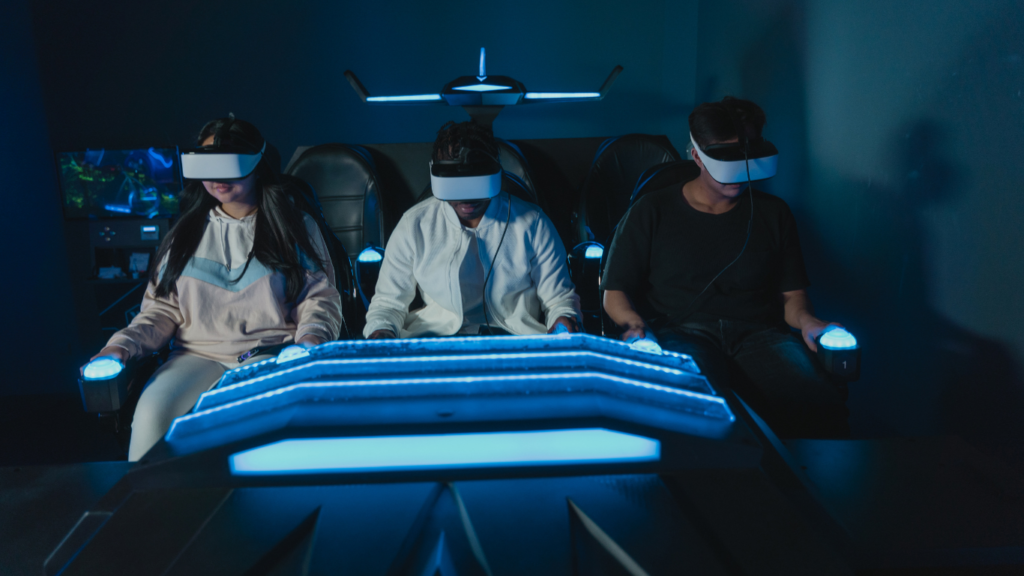Exciting advancements await in the world of virtual reality gaming as we look ahead to the upcoming year. From cutting-edge technology to immersive experiences, the next generation of VR gaming is set to revolutionize how we play and interact in the digital realm.
As an avid enthusiast of virtual reality myself, I’m thrilled to share insights on what we can expect in the ever-evolving landscape of VR entertainment. With the rapid pace of innovation and the convergence of gaming and technology, the possibilities seem endless for what the future holds for VR enthusiasts.
As we gear up for the next wave of VR gaming experiences, I’ll delve into the latest trends, upcoming releases, and potential game-changing developments that will shape the industry in the coming year. Get ready to dive into a world where reality meets the virtual, and gaming reaches new heights of excitement and immersion.
Innovations in VR Technology
Exploring the future of virtual reality (VR) gaming reveals a landscape ripe with innovations. As a tech enthusiast immersed in VR, I foresee significant advancements shaping the gaming experience in the upcoming year. Let’s delve into the cutting-edge developments and trends that are set to redefine how players engage with virtual worlds.
Enhanced Graphics and Realism
Improved hardware capabilities are pushing the boundaries of graphical fidelity in VR games. High-resolution displays and advanced rendering techniques are enhancing realism and immersion. Expect visually stunning environments and lifelike details that blur the line between the real and virtual worlds.
Advanced Haptic Feedback Systems
Innovations in haptic feedback technology are revolutionizing the tactile experience in VR. Enhanced controllers and VR peripherals offer precise and realistic touch sensations. Players can feel the impact of virtual interactions, adding a new dimension to gameplay immersion.
Expanded Field of View (FOV)
Wider FOV displays are becoming more prevalent in next-gen VR headsets. Increased FOV provides a more expansive and natural view of virtual environments. Players can enjoy greater spatial awareness and enhanced peripheral vision for a truly immersive experience.
Artificial Intelligence Integration
AI algorithms are being integrated into VR games to enhance realism and adaptive gameplay. Intelligent NPCs with dynamic behaviors create more engaging and responsive gaming experiences. AI-driven environments adjust to player actions, offering personalized challenges and interactions.
Cloud Gaming and Streaming
Cloud gaming services are shaping the future of VR by enabling high-fidelity experiences on lightweight devices. Streaming VR content from the cloud reduces hardware requirements and expands accessibility. Players can enjoy seamless gameplay across various devices, unlocking new possibilities for VR gaming.
In the realm of VR technology, constant innovation drives the evolution of gaming experiences. The upcoming year promises an exciting journey into the future of VR, where advancements in graphics, haptic feedback, FOV, AI integration, and cloud gaming converge to redefine immersion and interactivity in virtual worlds.
Popular VR Gaming Trends
Social VR Experiences
In the realm of virtual reality gaming, social VR experiences are becoming increasingly prevalent. Virtual worlds are no longer solitary adventures; instead, players can interact with friends and strangers alike in shared immersive environments. These social interactions enhance the sense of community and collaboration, bringing a new dimension to the gaming experience.
As I delve into the world of VR gaming, I anticipate a surge in social VR experiences that blur the lines between virtual and real-world interactions.
Cross-Platform Compatibility
One key trend shaping the landscape of VR gaming is cross-platform compatibility. Gamers across different devices and platforms can now come together seamlessly to enjoy multiplayer VR games. This trend not only expands the player base but also fosters inclusivity and diversity within the gaming community.
As I explore the future of VR gaming, I predict that cross-platform compatibility will continue to be a driving force, breaking down barriers and uniting gamers regardless of their preferred gaming setup.
Anticipated VR Game Releases
Exciting times lie ahead in the world of virtual reality gaming as we anticipate a wave of new game releases set to push the boundaries of immersive gameplay. Here are some of the highly anticipated VR games scheduled for release in the upcoming year:
- “Lone Echo II”
- “After the Fall”
- “Sniper Elite VR”
- “Wraith: The Oblivion – Afterlife”
- “Warhammer 40,000: Battle Sister”
- “Zenith: The Last City”
- “Zenith: The Last City”
- “Low-Fi”
- “I Expect You To Die 2: The Spy and the Liar”
- “Pistol Whip: Smoke & Thunder”
- “Winds & Leaves”
- “Wraith: The Oblivion – Afterlife”
These upcoming VR games are poised to deliver innovative gameplay experiences, stunning graphics, and captivating narratives, further solidifying virtual reality as a compelling platform for gaming enthusiasts. Stay tuned for these releases that promise to elevate the virtual reality gaming landscape to new heights.
Enhancements in VR Hardware
When it comes to advancements in VR hardware, the future looks promising. Innovations in virtual reality technology are continuously pushing the boundaries of what’s possible in gaming. In the upcoming year, we can expect significant enhancements in VR hardware that will further enrich the immersive gaming experience.
- Resolution and Refresh Rates: One of the key areas of improvement in VR hardware is the resolution and refresh rates of VR headsets. Higher resolutions and faster refresh rates mean sharper images, smoother movements, and reduced motion sickness, providing a more realistic and comfortable gaming experience.
- Field of View: Increasing the field of view in VR headsets is another crucial enhancement that can make the virtual world feel more expansive and lifelike. Wider fields of view help eliminate the feeling of looking through binoculars, enhancing immersion and realism.
- Comfort and Ergonomics: Manufacturers are focusing on improving the comfort and ergonomics of VR headsets to make them more wearable for extended gaming sessions. Lighter materials, better weight distribution, and adjustable straps contribute to a more comfortable fit, reducing strain on the neck and head.
- Wireless Technology: The shift towards wireless VR technology is gaining traction, offering gamers more freedom of movement without being tethered to a PC. Wireless VR headsets provide greater flexibility and convenience, allowing for a more seamless and immersive gaming experience.
- Tracking and Input Devices: Enhanced tracking systems and more intuitive input devices play a significant role in improving the overall VR experience. Precise tracking of head and hand movements, coupled with advanced controllers, enhances interaction with the virtual environment, making gameplay more intuitive and engaging.
- Audio Enhancements: Immersive audio is a crucial aspect of the VR experience. Advanced audio technologies, such as spatial audio and noise cancellation, can further enhance immersion by accurately replicating sounds in 3D space, creating a truly immersive auditory environment.
In the upcoming year, these enhancements in VR hardware are set to revolutionize the way we perceive and interact with virtual worlds, taking VR gaming to new heights of realism and immersion.



